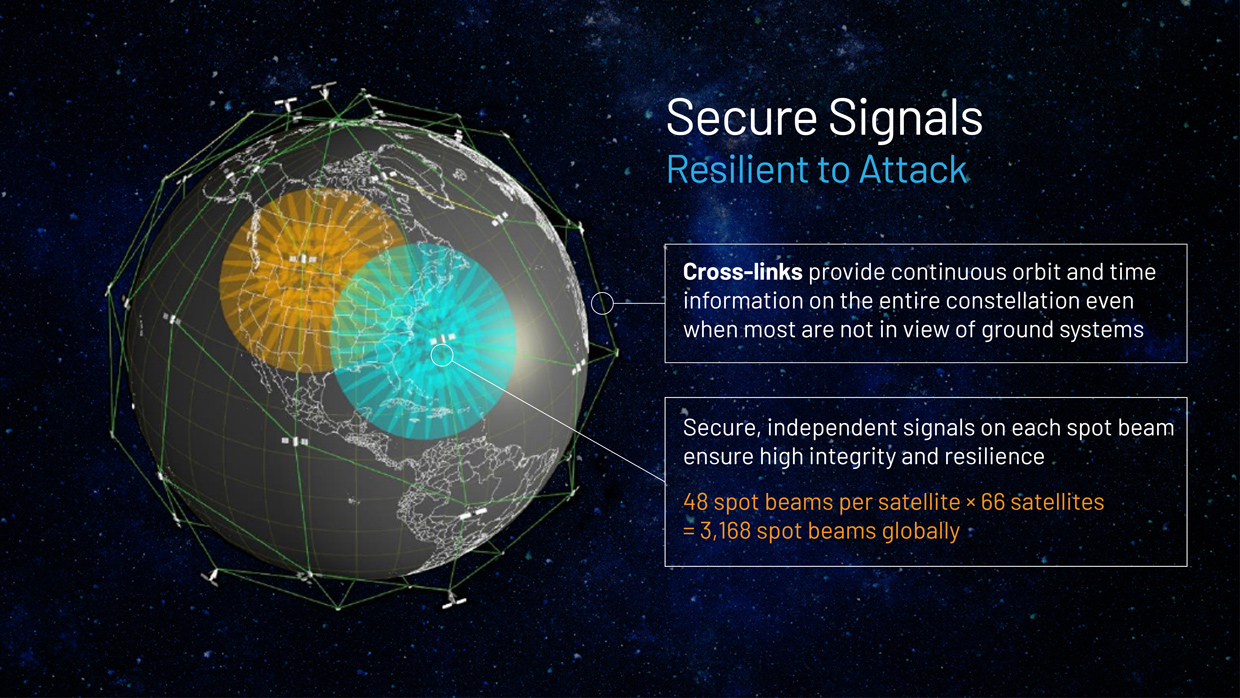

Maintaining precise positioning, navigation, and timing (PNT) is critical to virtually every industry, from financial services to wireless communications to autonomous vehicles. And while GPS and GNSS are exceptional, they’re not infallible – which makes STL essential for the delivery of assured PNT.
Reliability
As an innovative positioning, navigation, and timing (PNT) solution, STL just works — both indoors and outdoors. Customers have been using the solution for years, and reliability has been verified through independent government testing in the United States and European Union.
Satelles has an established track record providing a dependable commercial service to customers. Our STL-based PNT solutions are currently deployed within telecom operators, banks, major stock exchanges, data centers, transportation, and other businesses across the globe.
STL is a resilient complement to GPS, providing a strong backup in the event of GPS disruption or in environments where GPS cannot be delivered. It also provides timing synchronization and position fixes under conditions in which GNSS is not available.
Easy and quick to install, and with the ability to penetrate where other systems cannot, STL is a perfect and dependable complement to GNSS and GPS.
Security
At Satelles, we believe “Our strength is your security.” Backing up this claim are STL’s unique security features, resulting in a trusted PNT solution that is highly resistant to cyberattacks and other signal manipulation:
Detect and Mitigate Disruption
PNT solutions based on STL detect and mitigate GPS/GNSS signal disruption and manipulation. Resilience is achieved through the strength and security of the STL signal and the design of user equipment.
For example, equipment that integrates STL is designed to detect manipulation by constantly comparing PNT data from GPS/GNSS and STL. When values deviate beyond an acceptable tolerance threshold – indicating an inauthentic signal delivering false and potentially dangerous PNT information – an STL-enabled receiver will generate an alarm and automatically switch to STL as the primary source of PNT data.
Secure, Trusted Time and Location
STL uses signal authentication techniques to enable a proof-of-location approach. This allows Satelles to deliver secure, trusted time and location that is effectively impervious to manipulation.
Due to the lack of security that GNSS signals have and how easily they can be manipulated, governments in North America and Europe are extremely concerned about critical infrastructure in their nations being reliant on GNSS. Organizations that depend on accurate and trustworthy PNT information for civil and commercial applications can count on STL to provide resilience by overcoming the threats posed by GPS/GNSS disruption and manipulation.


How STL Combats the Threats of Signal Disruption and Manipulation
The STL signal is about 1,000 times (30 dB) stronger than GPS/GNSS and extremely difficult to disrupt. This means that when a much weaker signal from GPS/GNSS is affected by interference (or degraded due to environmental conditions), an STL-equipped receiver detects the loss of GPS/GNSS service and continues to deliver rock-solid PNT data by seamlessly transitioning to STL.
The exceptional strength of the STL signal compared to GPS/GNSS also makes it significantly less susceptible to attack and more reliable when facing threats from manipulation. STL makes use of the complex and overlapping beam patterns of Iridium satellite signals and incorporates cryptographic techniques in ways that make it very difficult to manipulate, providing further layers of protection.
Did you know?
Unlike land-based systems, satellite systems are effectively impervious to physical attacks by terrorists and far less vulnerable to state-actor attacks. Furthermore, LEO satellites that broadcast STL are well protected from space disturbances (e.g., solar storms) and far less susceptible to the harmful effects of internal and surface charging, which can cause permanent damage to the electronic components of space vehicles operating at higher-altitude orbits.

What is the “Responsible Use of PNT Services”?
Executive Order 13905 in the United States defines the “responsible use of PNT services” as “the deliberate, risk-informed use of PNT services, including their acquisition, integration, and deployment, such that disruption or manipulation of PNT services minimally affects national security, the economy, public health, and the critical functions of the Federal Government.”
As a complementary form of PNT that has been recognized by NIST, DHS, and DOT, STL can be a key aspect of an organization’s comprehensive cybersecurity plan. Companies and public sector organizations are encouraged by the U.S. Government to adopt the principles of EO 13905, including the Foundational PNT Profile: Applying the Cybersecurity Framework for the Responsible Use of PNT Services from NIST and the Resilient PNT Conformance Framework and Resilient PNT Reference Architecture from DHS.